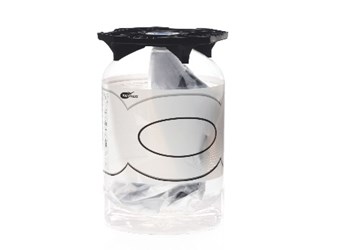New Revolutionary One - Way Keg: KeyKeg 30 Slimline

More profits and choices for bar owners
Lightweight Containers announces the development of a new one-way keg. This cylindrical 30-litre keg uses both the KeyKeg Double Wall and Bag-in-Ball technologies. The new keg will be on show the market in the first quarter 2014. Soon bar owners will notice a greater range of choices in wines and beers on draught. They’ll also feel the difference in their wallets. Lightweight Containers, the company behind KeyKeg, will present the new keg at drinktec 2013 in Munich, booth number A2.340.
KeyKeg’s customers include more than 800 beer and wine producers. The market leader in one-way kegs anticipates that in the next five years, 25 per cent of the kegs in use will be replaced by one-way kegs, and most of these will be KeyKegs. Soon, many bar owners will be coming into contact with KeyKegs. Currently, KeyKegs are in use in over 190 countries.
This growth is logical, says Lightweight Containers CEO Jan Veenendaal. ‘Most of the advantages of KeyKeg are with the end user. Beer stays good for weeks after broaching a KeyKeg. In a steel keg, this is usually only a few days. Wine also stays good much longer in a KeyKeg. Bar owners don’t have to worry any longer about wasting beer and wine. More and more bar owners are asking our clients to fill their favourite beers and wines in KeyKegs. We’re noticing that thanks to KeyKeg the number of beers and wines on tap for consumers is increasing in our markets.’
Technical director Bert Hanssen adds, ‘The Bag-in-Ball technology means that none of the product is left at the bottom. A KeyKeg is also easier to dispense from, and foaming problems are virtually a thing of the past. So with a KeyKeg you save on average two to five glasses per keg. That’s a saving of five to fifteen Euros right there. And that doesn’t include what the bar owner used to have to pour off due to ‘flat beer’ or over-carbonisation in a steel keg. KeyKeg can also be tapped with air, using a simple air compressor. This saves having to buy expensive bottles of CO2. Altogether, you quickly see more profit with KeyKeg.’
Sustainability
A KeyKeg weighs 1 to 1.4 kilograms, and is easily crushed and taken away by the local waste management company. KeyKegs are completely recyclable. Lightweight Containers is striving to re-use the materials in used KeyKegs to manufacture new KeyKegs.
Types of one-way kegs
Historically, the best-known type of keg has been the steel keg with a tube inside it called a ‘spear’. The propellant gas (CO2 or N2) pushes the beer or wine up through the spear to the dispensing valve. Exposure to this gas is what limits the product’s shelf life.
The second type of one-way keg uses the more recent Bag-in-Ball technology. The beverage is contained in an inner bag, which prevents it from coming into contact with the propellant gas. This keeps the beverage good for weeks after broaching, and unbroached kegs have at least as long a shelf life as steel kegs. KeyKeg is the developer of the Bag-in-Ball technology.
Lightweight Containers, the company behind KeyKeg
Lightweight Containers is known for the one-way KeyKeg series in 20- and 30-litre versions: A KeyKeg can be fitted to any existing dispensing equipment using the universal KeyKeg coupler.
Lightweight Containers is part of the KeyKeg consortium and is responsible for sales, marketing and R&D. The KeyKeg Baseline series was launched in November 2006 during the Brau trade fair in Nürnberg, and the KeyKeg Slimline series during the Brau 2012. The company has over 800 customers worldwide, among them many brewers, winemakers and their distributors, all on www.keykegusers.com. In the last four years, the number of KeyKegs sold grew by more than 50 per cent each year. For more information, visit www.keykeg.com.
Source: Lightweight Containers
